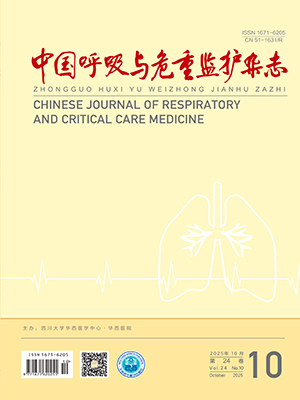Objective To evaluate the effects of selective serotonin reuptake inhibitors ( SSRIs) on sleep apneas in Sprague-Dawley ( SD) rats. Methods Thirty adultmale SD rats were randomly divided into two groups ( 15 rats in each group) . The treatment group and the control group were injected intraperitoneally with paroxetine ( 10 mg· kg- 1 · d - 1 ) and sterile distilled water ( 2 mL· kg- 1 · d - 1) for 7 days respectively. Parameters about sleep apnea and sleep structure were measured before and after the treatment. Results In the treatment group, there was a significant reduction of apnea index ( AI) from ( 12. 4 ±3. 7)times /hour to ( 7. 4 ±2. 2) times/ hour ( P = 0. 000) . Both post sigh apnea index ( PSAI) and spontaneous apnea index ( SPAI) were decreased significantly ( P = 0. 000 and 0. 021 respectively) in non-rapid eye movement ( NREM) sleep, but not in REM sleep. REM sleep was reduced from 8. 6% to 8. 0% ( P =0. 013) and its latency was increased from ( 54. 1 ±48. 4) min to ( 110. 9 ±43. 4) min ( P = 0. 001) in the treatment group, as well as the sleep-onset latency [ from ( 20. 7 ±9. 1) min to ( 30. 0 ±15. 7) min, P =0. 038] . Conclusion Paroxetine can reduce sleep apneas in SD rats during NREMsleep. Its effects on sleep structure include reducing REM time, increasing REM latency and sleep-onset latency.
Citation: WANG Yao,WANG Guangfa,ZHANG Cheng.. Effect of Paroxetine on Sleep Apneas in Sprague-Dawley Rats. Chinese Journal of Respiratory and Critical Care Medicine, 2009, 09(4): 384-387. doi: Copy
Copyright © the editorial department of Chinese Journal of Respiratory and Critical Care Medicine of West China Medical Publisher. All rights reserved
-
Previous Article
Emergency Management and Security of First-line Medical Supplies in the 3A Hospital During the Wenchuan Earthquake——May 12-June 30,2008 -
Next Article
Emergency Management and Security of First-line Medical Supplies in the 3A Hospital During the Wenchuan Earthquake——May 12-June 30,2008




